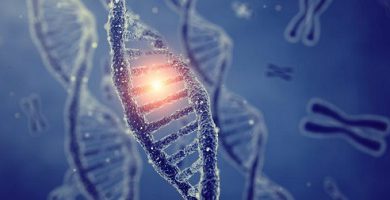What are natural disasters?
We explain what natural disasters are and how these natural phenomena are classified. Examples of natural disasters.
-
What are natural disasters?
Natural disasters are understood as those violent or sudden changes in the dynamics of the environment , whose repercussions can cause material and life losses, and which are the product of environmental events in which the hand of the human being is not present , such as earthquakes , floods, tsunamis , among others.
They are cataloged as disasters since environmental conditions go to extremes, exceeding the limits of what was considered normal. Thus, an earthquake can be harmless, but if it increases its intensity and becomes an earthquake, it will surely cause death, destruction and structural changes in the earth’s surface .
Natural disasters should not be confused with environmental disasters , characterized by the presence of a specific substance that pollutes, degrades or destroys the chemical, physical or biotic balance of an ecosystem . This type of environmental tragedy is usually a direct consequence of irresponsible human activities with the environment.
However, one could argue that these disasters are never exclusively natural , since to some extent they can be complicated or even due to poor planning (even the total lack of planning), by human societies. Even so unpredictable phenomena such as the eruption of volcanoes are major challenges for even the most developed and organized of the companies.
-
Classification of natural disasters
Natural disasters can be classified according to their nature, as follows:
- Atmospheric phenomena . They derive from climatic conditions or the Earth’s atmosphere , and tend to be extreme: prolonged droughts or endless thunderstorms, blizzards, hurricanes, etc.
- Mudslides . It is understood by avalanches, avalanches and other landslides of land masses, such as rivers, stones, mountains , mud, etc.
- Biological disasters . Here come the pandemics and mass extinctions, among other infectious outbreaks that may or may not directly attack the human being.
- Volcanic eruptions . When the boiling magma from the depths of the Earth gushes out violently, it gives rise to volcanoes. Hot lava creates new layers of surface and destroys everything in its path.
- Space phenomena . Here fall objects fall from space such as meteorites, solar winds and other phenomena from outside the planet.
- Fire forest . The drought, the intense sun or the presence of glass and other materials that concentrate the sun’s rays making a magnifying glass, can start huge fires, which devour hectares of grassland and even entire forests in its path, ending life and massively soiling the atmosphere with its fumes and particles in suspension.
- Earthquakes . This is the name of the jerky and disorderly movements of the earth’s crust, a consequence of the movements of the tectonic plates. They can be mild and cause little damage, or be terrible shocks that bring down trees, buildings and mountains.
- Tsunamis and floods . Consequence of summary earthquakes or abrupt climatic changes (such as the El Niño phenomenon), they flood everything in its path, submerging entire houses and accumulating bodies of water that drag everything in its path, ruining crops and entire villages.
-
Examples of natural disasters
Throughout history there have been major natural disasters, among which we can list the following:
- The Great Drought in the United States during the 1930s.
- La Tragedia de Vargas, a trough on the coast of Venezuela in 1999, which caused heavy rains for a week and massive landslides, so it is listed as the most deadly mudslide in history by the Guinnes Record.
- The Spanish flu of 1918, a pandemic that killed about 40 million people.
- The 2011 Japan tsunami, the result of a catastrophic earthquake in the Pacific Ocean basin of 9.0 degrees on the Richter scale, which created waves up to 40.5 meters high.
- The eruption of Mount Vesuvius, which buried the Roman city of Pompeii in lava in 79 AD
- The Chiapas earthquake of 2017, which occurred in September of that year and with an epicenter in the Mexican city, had an intensity of 8.2 on the Richter scale and left 98 dead and 2,500,000 affected.
- Hurricane Maria in 2017, the third hurricane of the season of the year in the Caribbean, after Irma and José, also devastating. It killed around 500 people and was particularly cruel in Puerto Rico, which was still recovering from the damage caused by Irma.




